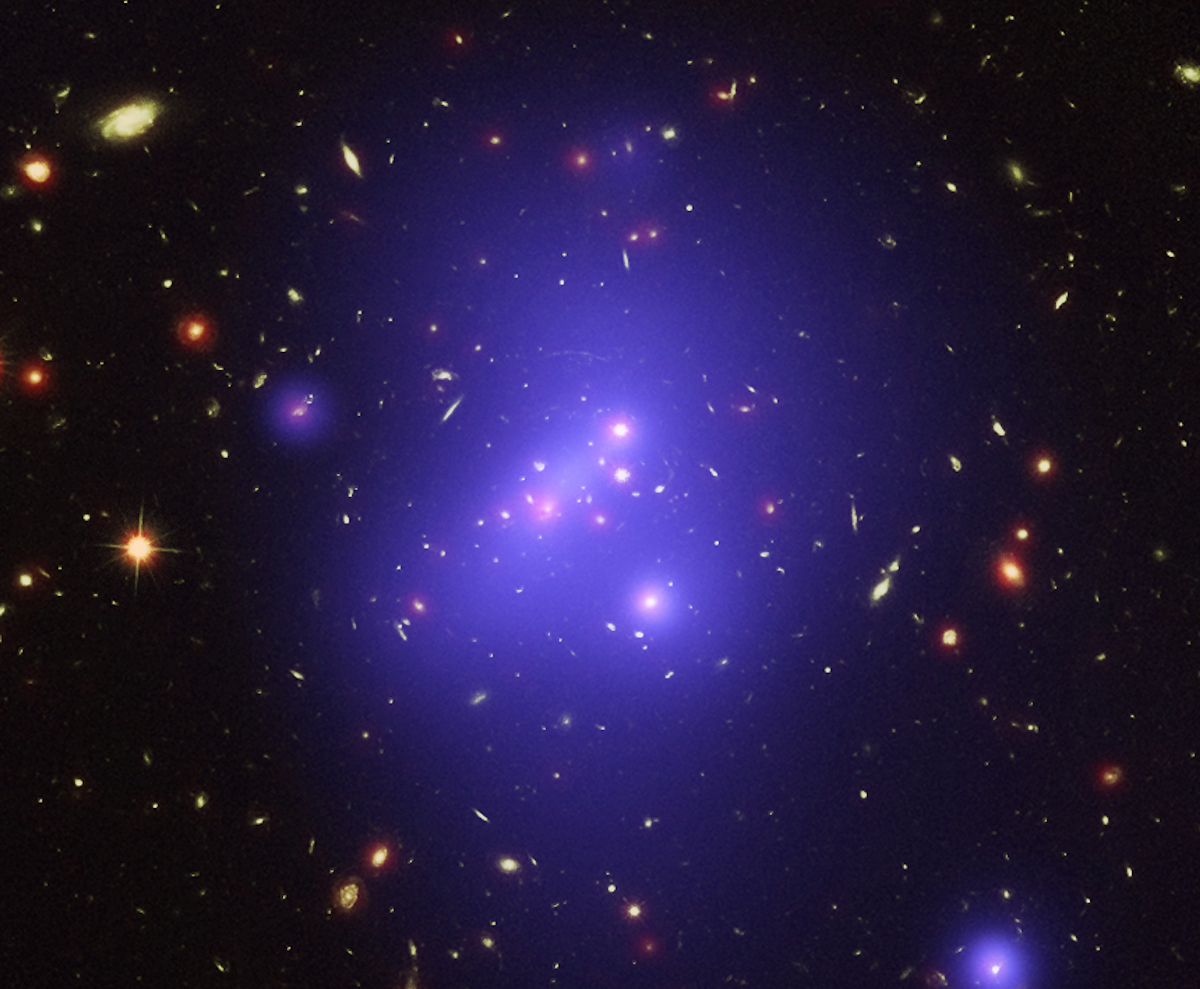10 Billion Light Years Away, MIT Researchers Find Massive Galaxy Cluster

The galaxy cluster shines bright from 10 billion-light years away. Photo via NASA.
These galaxies are far away. Some might say they’re far, far away. Like 10 billion light years away. And, as it turns out, there are loads of them.
Published in The Astrophysical Journal, a new study delivers a new glimpse at a massive galaxy cluster called IDCS 1426. As the term implies, a galaxy cluster consists of many different galaxies tethered in close proximity to one another by gravity. They can contain several hundred galaxies or even several thousand. In a press statement, MIT’s Michael McDonald, a co-author on the paper and professor of physics, described galaxy clusters as “sort of like cities in space.”
While IDCS 1426 was on the team’s radar, they didn’t know much about it. The paper sheds light on the size and history of “the most distant massive galaxy cluster” ever identified and contains a few cosmic revelations that crush our sense of scale and remind us that Earth is but a speck in the vastness of space. Taken together, this galaxy cluster is “250 trillion times more massive than the Sun, or 1,000 times more massive than the Milky Way galaxy,” according to MIT’s statement.
NASA put it another way, writing that the megastructure “weighs almost 500 trillion suns.” The agency adds that “90% of the mass of the cluster is in the form of dark matter, the mysterious substance that has so far been detected only through its gravitational pull on normal matter composed of atoms.”
At this point, McDonald and his team have confirmed 12 galaxies within IDCS 1426, but he seems confident there are many more to be discovered, calling the first dozen the “tip of the iceberg.” He and his colleagues will continue scouring the data in search of additional galaxies while looking for clues to how the universe formed.
It’s likely this cluster took shape about 3.8 billion years after the Big Bang. The Big Bang is said to have occurred about 13.8 billion years ago; Earth came about somewhere around 4.6 billion years ago.
“In the grand scheme of things, galaxies probably didn’t start forming until the universe was relatively cool, and yet this thing has popped up very shortly after that,” McDonald said in the statement. “Our guess is that another similarly massive cluster came in and sort of wrecked the place up a bit. That would explain why this is so massive and growing so quickly. It’s the first one to the gate, basically.”
In other words, this galaxy cluster is old. And far, far away.

